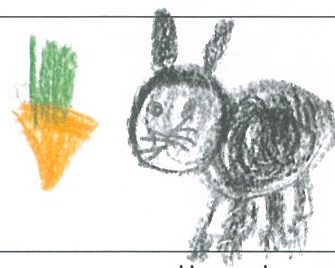Languages: Italian - Satisfactory - Foundation to Year 2
Portfolio summary
This portfolio of student work shows that the student uses Italian to communicate with the teacher and peers through action-related talk and play. The student demonstrates comprehension by responding both verbally and non-verbally (WS1). The student imitates simple words and phrases (WS1). The student responds to familiar games and routines such as questions about self and family and chooses among options. The student produces learnt sounds and formulaic expressions or partial phrases, often providing only part of the required response in Italian or using a key word to convey a whole idea. The student experiments with and approximates Italian pronunciation, for example, producing vowel sounds and ‘c’ and ‘ch’ pronunciation with some accuracy. The student differentiates between statements and questions according to intonation. The student makes meaning using paralinguistic and contextual support such as pictures (WS1), gestures and props. The student writes descriptions, lists, labels and captions, using familiar words and phrases selected from modelled language (WS1).
The student knows that Italian is the national language of Italy. The student identifies the 21 letters of the Italian alphabet. The student knows that simple sentences follow a pattern, and that nouns require an article and are gendered either masculine or feminine (WS1). The student demonstrates understanding of the different ways of addressing friends, family and teachers/other adults. They student identifies patterns in Italian words and phrases (WS1) and makes comparisons between Italian and English. The student knows that languages borrow words from each other and provide examples of Italian words and expressions that are used in various English-speaking contexts. The student identifies similarities and differences in the cultural practices of Italians and Australians. The student understands that they have own language(s) and culture(s), and that they are also learners of Italian language and culture.
